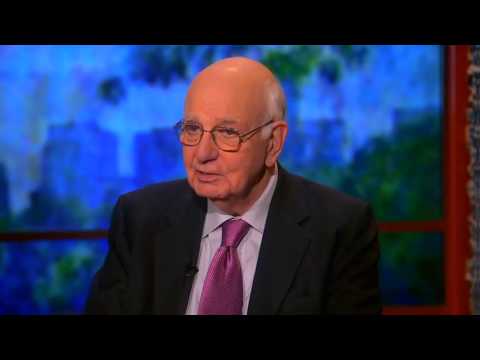Ginnie Mae and the Securitization of Federally Guaranteed Mortgages Congressional Budget Office

At the end of that recovery process, the issuer may work to settle any potential claim with the primary government guarantor, typically FHA or VA. As long as issuers perform their duties, Ginnie Mae’s only involvement in those cash flows is providing the infrastructure necessary for issuers to remit payments to MBS investors and collecting the guarantee fee it charges issuers. The volume of Ginnie Mae’s business has increased sharply in the past 15 years, reflecting the growth in the volume of federally insured mortgages over that period. For example, a growing share of the MBSs guaranteed by Ginnie Mae contain loans issued by nonbank financial institutions. Such institutions are generally subject to a different regulatory regimen and a more uncertain process in the event of failure than traditional banks are.

CBO did not adjust miscellaneous cash flows for the stress scenario because of their negligible effect on Ginnie Mae’s subsidy rate. A sharp increase in delinquent borrowers can create stress for issuers of Ginnie Mae–guaranteed MBSs because they are required to forward the missed payments to MBS investors. In exchange, the issuer is required to repay the advance, with interest, in a specified period. In this report, the Congressional Budget Office provides an overview of its baseline budget projections for Ginnie Mae and analyzes a scenario in which Ginnie Mae could be exposed to losses in a period of severe economic stress.
Is Ginnie Mae a Government Agency?
Alternatively, if Ginnie Mae retained the servicing obligation and hired a third-party subservicer to carry out those duties, it would have cash outflows to pay the subservicer. Unlike Freddie and Fannie, Ginnie Mae focuses exclusively on government loans that appeal to people with somewhat disparate loan application credentials. FHA loans, VA loans and USDA loans all facilitate financing for home purchases even when borrowers have low or no credit. The intent here is to build investor confidence in mortgage-backed securities by reducing financial risk. Anyone who misses a payment will still need to make good on their financial commitments, although there are forbearance options that offer extensions on mortgage payments. As the Fed increases rates, Ginnie Mae’s rates of return fall, and vice versa.
Of course, any investor should be concerned with the rate of return they’re going to get on their money. When interest rates are rising, it’s because conditions in the market are such that it requires a higher yield to attract a bond investor. Fannie Mae was converted from a government-sponsored enterprise (GSE) to a publicly traded company. Ginnie Mae was established as a GSE and part of the Department of Housing and Urban Development, or HUD.
The Bottom Line: Ginnie Mae Provides Support For Government-Backed Mortgages
Rather than perform the role of issuer itself, Ginnie Mae could transfer those responsibilities to another issuer or hire a third party (known as a subservicer) to handle them. In either case, Ginnie Mae’s guarantee, and thus its exposure to risk, would remain in effect. PTAP was designed to be a program of last resort for issuers, requiring them to exhaust all other funding options before applying for an advance from Ginnie Mae. From April 2020 through September 2021, Ginnie Mae issued only 23 advances, totaling $13.1 million.4 By the end of September 2021, the balance of all advances had been repaid.
The federal government operates various programs to encourage lenders to provide mortgages to people who might otherwise have trouble getting a home loan, such as first-time homebuyers, veterans, people with relatively low income, or people who live in places where access to credit is limited. Ginnie Mae was created to make it easier for lenders that make loans under those programs to sell the loans in the secondary (resale) market and thus replenish their funds to make additional mortgages. Ginnie Mae pursues that goal by guaranteeing that investors who buy mortgage-backed securities based on such loans will continue to receive scheduled principal and interest payments on the loans if the MBS issuers or mortgage borrowers fail to meet their financial obligations.
How Does Ginnie Mae Differ From Government-Sponsored Enterprises?
In 2008, during the housing crisis, Fannie Mae and Freddie Mac were overseen by the government via a conservatorship of the Federal Housing Finance Committee. Some argue that the bailout erased Ginnie Mae’s distinction as the only federal agency guaranteeing mortgage securities that enjoy government protection against failure. Ginnie Mae’s efforts aid those traditionally underserved in the mortgage market. Most mortgages securitized as Ginnie Mae MBSs are insured by the Federal Housing Administration (FHA), which typically insures mortgages to first-time home buyers and low-income borrowers.

Government National Mortgage Association (Ginnie Mae) is a self-financing, wholly owned U.S. Government corporation within the Department of Housing and Urban Development. It is the primary financing mechanism for all government-insured ginnie mae or government-guaranteed mortgage loans. They all buy mortgages to package into an MBS, which is sold on the bond market. This provides liquidity in the mortgage market and helps keep housing affordable.
What is a Ginnie Mae Loan? How do GNMA loans work?
And as a result of that increased investment activity, lenders are encouraged to extend more government home loans. Fannie Me and Freddie Mac are heavily monitored and regulated by the government, but they aren’t government agencies. On the other hand, Ginnie Mae is a government branch and simply guarantees MBSs for investors to make the mortgage market more accessible. Ginnie Mae, or the Government National Mortgage Association (GNMA), is a federally owned corporation that helps guarantee homes for low-income borrowers and first-time home buyers.
- Although the FHA subsidy rate that CBO publishes is the average rate across all 1,000 paths for economic conditions, the model produces a subsidy rate for each path.
- FHA loans are aimed at borrowers with less-than-perfect credit or shorter histories.
- Fannie Mae and Freddie Mac are government-sponsored enterprises (GSEs) that create guidelines for the loans they guarantee.
- Not all proposals for restructuring include a modified role for Ginnie Mae, but most recognize that changes to the GSEs might also require the Federal Housing Administration (FHA), the Department of Veterans Affairs (VA), the Rural Housing Service (RHS), and Ginnie Mae to adapt to those changes.
- Freddie and Fannie may get all the attention, but Ginnie Mae plays an equally crucial role in the broader mortgage lending universe.
Ginnie Mae was responsible for about 8 percent of the agency MBSs issued in calendar year 2006. Its share rose steadily after that, peaking at 34 percent from 2015 through 2018. Ginnie Mae’s share of new agency MBSs declined to 24 percent in 2020, despite record growth in its newly guaranteed securities in that year. Fannie Mae and Freddie Mac are government-sponsored enterprises (GSEs) that create guidelines for the loans they guarantee. Loans that meet their guidelines become bundled and bought by Fannie Mae or Freddie Mac to provide more liquidity for lenders.
Rocket Mortgage
When that happens, FHA pays a claim to the lender for the unpaid principal balance of the defaulted mortgage. Other programs, such as VA’s, guarantee to repay a certain percentage of a mortgage in default. Those federal backstops typically mean that lenders provide mortgages to qualifying borrowers on better terms (such as with lower interest rates, lower closing costs, or smaller down payments) than they might otherwise. CBO adjusted the Administration’s estimate of annual cash flows from Ginnie Mae’s guarantee fees for the stress scenario to reflect the expected difference in borrowers’ voluntary prepayments of mortgages. Under the economic conditions implied by the stress scenario, borrowers would voluntarily prepay their mortgages more slowly—driven in part by declining home prices and tighter lending standards for refinancing loans—leaving higher outstanding mortgage balances, which would generate more fee income for Ginnie Mae.
CRED iQ Adds New Managing Director for New Manhattan Office … – Commercial Observer
CRED iQ Adds New Managing Director for New Manhattan Office ….
Posted: Mon, 07 Aug 2023 16:20:50 GMT [source]
It’s also important to note that you may qualify for increased flexibility around your debt-to-income ratio (DTI) if you have a score of 620 or better. Higher credit scores can also mean lower rates if everything else is held equal. The majority of loans backed by Ginnie Mae are those underwritten to the requirements of the Federal Housing Administration (FHA). FHA loans are aimed at borrowers with less-than-perfect credit or shorter histories. Although you can get an FHA loan with a 10% down payment if your median FICO® Score is 500 or better, most lenders, including Rocket Mortgage, require a median score of 580 with a down payment of 3.5% or more.
In 1938, FDR’s administration created the Federal National Mortgage Association — shortened to FNMA or Fannie Mae — giving it the authority to buy homeowners’ loans from qualified lenders and then bundle them into mortgage-backed securities (MBS). This monumental event created liquidity and made it easier for lenders to extend mortgages to potential homebuyers because they no longer needed to directly fund those loans with their own money. Without their guarantee, there would be much less demand for mortgage-backed securities, decreasing lenders’ liquidity and making it much harder to secure a mortgage.
This scenario represents the worst 1 percent of economic outcomes that CBO models over the coming decade. It represents a severe recession that includes higher-than-expected failure rates among issuers of Ginnie Mae–guaranteed MBSs and larger-than-expected losses on the mortgages underlying those securities. CBO based the stress scenario on its model of the Federal Housing Administration’s (FHA’s) mortgage guarantee programs. That model uses 1,000 combinations of different values for major macroeconomic variables to simulate future economic conditions and projects FHA’s cash flows for loan guarantees under those differing conditions. CBO defined the stress scenario as the 10 out of those 1,000 sets of economic conditions that produced the highest estimated subsidy rates for FHA’s loan guarantees (and thus presumably for Ginnie Mae’s guarantees of MBSs composed of loans guaranteed by FHA and other federal agencies).
In 1970, Ginnie Mae became the first organization to create and guarantee MBS products and has continued to provide mortgage funds for homebuyers ever since. Several organizations are similar to Ginnie Mae, notably Freddie Mac and Fannie Mae. Freddie Mac and Fannie Mae are government-sponsored enterprises (GSEs), federally chartered corporations owned by private shareholders.





